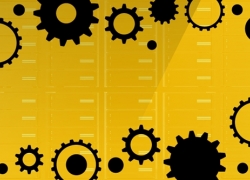How to choose the best DCIM solution
How to choose the best DCIM solution

As the market for data center infrastructure management (DCIM) grows, so do the options available to decision-makers who would seek to deploy these solutions in their mission-critical facilities. That leaves data center managers in the postilion of having to cut through a sea of noise to get to the core of which DCIM features and functionality will actually matter to them.
To help whittle down that search, we've created a very short list of key considerations to make when exploring options for a DCIM deployment.
1. Open API architecture
A DCIM solution is only as good as its data. The solution you choose must integrate seamlessly with other protocols in your facility. These include, but aren't limited to, NMP, Modbus TCP, Modbus RTU, BACnet, LONworks, Niagara and Hardwired I/O. Not only will this speed up time-to-deployment, but it's also crucial to aggregating the information you need to have a bird's-eye view of your entire facility.
Secondly, a data center center is not an island. It's part of a bigger entity, whether that's a content provider, a hospital, a government agency or all of those things if you're a cloud services provider. Thus, the solution you select should ideally integrate with third-party applications such as a business management solution. Bi-directional architecture enabled by a RESTful API, will facilitate greater cohesion between data center and business priorities.
2. Comprehensive data visualizations
With open architecture DCIM can integrate with fixtures in your facility such as power distribution units (PDUs), environmental monitors, IT equipment and other core systems. This integration should be seen almost as a prerequisite, mainly because it's essential to the second fundamental function of DCIM: to visualize your facility operations comprehensively, accurately and intuitively.
"Users need the option to drill-down and scale back their view of operations."
DCIM's power lies in its ability have large-scale modeling (such as thermographic views) of IT load, power consumption, temperature, airflow and other data collected through your integrations. Simultaneously, users need the option to drill-down for a more granular view of operations. This includes the ability to "select and view individual cabinets, the equipment mounted in them, and in some cases, their usages, software complements and cable connectivity," according to TechTarget contributor Robert McFarlane.
This can help data center managers understand how each component within their facility impacts the entity as a whole.
3. Planning for the long haul
We mean two different things by this. First, DCIM must have a core set of features that help facilities and IT, and also business stakeholders, stay in-step with one another as operations change. These features include:
- Asset management: Detailed information about every piece of equipment in the facility in one centralized place.
- Capacity planning: A unified view of resource capacities for IT (servers, switches, etc.) and facilities (cooling, power, etc.).
- Change management: The ability to track all changes in a facility to ensure optimal implementation.
- Predicative modeling: Hypothetical models for how future developments will affect the data center.
Secondly, DCIM should be seen as a long-term solution for your data center infrastructure. Thus, the vendor should be held to that standard. This means providing any necessary integration help at deployment, offering ongoing consultations to optimize the performance of the solution, and lending support whenever it may be needed.
When you choose a DCIM vendor, you choose a partner. In other words, the support behind the solution is as critical as the software itself. Work with a technology partner that understands this, and you'll be that much more likely to achieve lasting success with your DCIM deployment.




